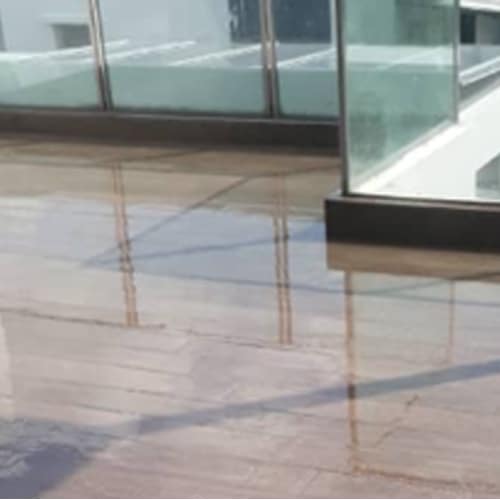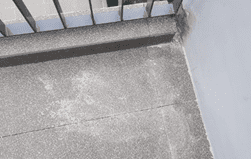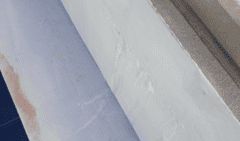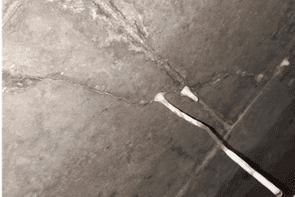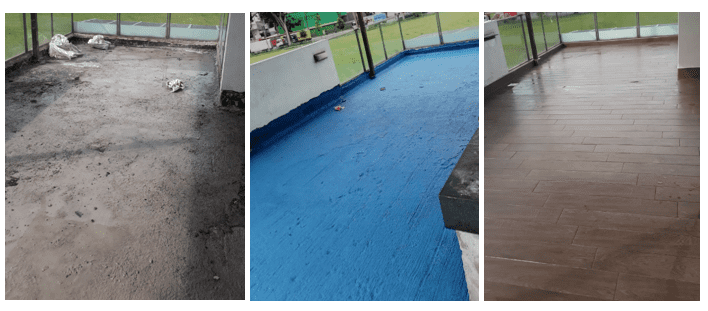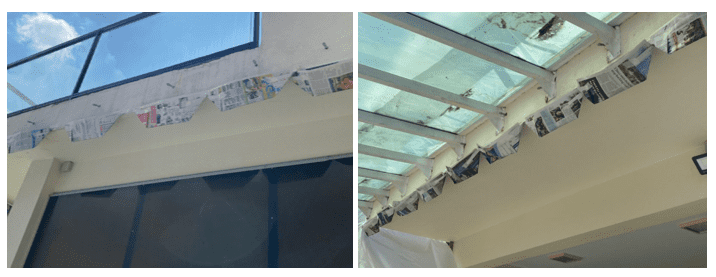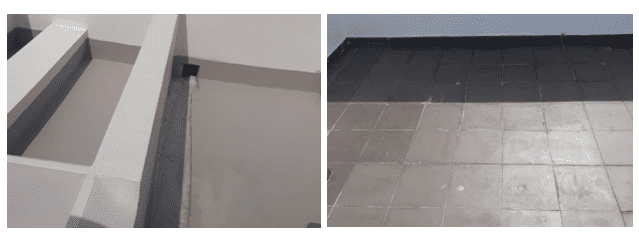Given the limited land area available in Singapore, homes are constantly getting smaller. Having balconies in your home is definitely an asset, as they present many perks, including enhancing the aesthetics of the house, making the house appear more spacious, allowing for better air circulation, etc. It is also often used as a space to create your very own garden oasis as well as for personal relaxation and social activities with your loved ones.
However, because balconies are exposed to Singapore’s harsh weather conditions all year, they are more prone to waterproofing membrane failure than other parts of the house.
That being said, we often advocate for homeowners to conduct regular checks and maintenance on their balconies so that they can identify signs of balcony waterproofing failure early and take the necessary actions to resolve them promptly.
In this article, we will be delving into details on the causes, tell-tale signs, and remedies for balcony waterproofing failure. We urge all homeowners to pay timely attention to their balconies as much as other parts of the house to prolong the waterproofing lifespan and avoid water leakage problems.
Causes of Balcony Waterproofing Failure
Many homeowners often ponder the reasons why their balcony waterproofing systems wear out so quickly, especially when they are not as often used as other wet areas such as bathrooms, etc. If you find yourself wondering the same thing, here are some of the common causes of balcony waterproofing failure that might answer your question.
1. Poor workmanship
Proper care must be applied during the design, preparation, and execution stages of constructing balconies. Contractors are to be familiar with the correct method of construction, the application of waterproofing membranes, and the installation of the final finishes (e.g., tiles, wooden decking, artificial grass carpets, etc.). Unfortunately, homeowners have encountered contractors who cut corners and are insufficiently trained in waterproofing installations, resulting in leaks to the lower surfaces of the neighbouring unit or the ceiling. Homeowners frequently end up spending a lot of money on repair costs. As the old saying goes, “Do it once, do it right.” Hence, it is important to ensure high-quality workmanship from the get-go to avoid such costly mistakes. A gentle reminder to homeowners would be to get their contractors to conduct a water ponding test to ensure that the waterproofing system has been properly installed before they proceed with the screed and tiling work.
2. Balcony finishes and design
Balconies finished with artificial turf carpets to create a nice, green outdoor atmosphere have become increasingly popular in recent years. However, as these artificial turf carpets are unable to absorb or drain water on their own, it often results in water ponding or accumulation, which will damage the waterproofing membrane over time. If the balcony floor was not even prior to installing the artificial turf carpets, the carpets will follow along the uneven surfaces, creating pockets for water to collect. The other common balcony design would be installing a wooden deck system supported by the concrete balcony slab, achieving a modern and sleek balcony design. However, homeowners do not often access and check under the wooden decking for water ponding concerns, especially after heavy rain. With the porosity of a concrete slab, water ponding will result in balcony waterproofing system failure and cause seepages into the lower surface. Therefore, it is important for homeowners to do comprehensive research and weigh the pros and cons of the various balcony finishes before deciding on one.
3. Wear and tear
Unfortunately, just like any other product in the world, waterproofing does not last forever. Over time, with long-term exposure to the sun, rain, and foot traffic, it is natural for the waterproofing membrane to experience wear and tear. When this happens, there will be joint failures between the balcony tiles, which will eventually wear out the waterproofing membrane beneath it as water can seep through. Although homeowners often highlight that the balcony is not as often used or exposed to water as compared to bathrooms, etc., they often forget that whenever it rains, the balcony is actually one of the first few elements of the house (apart from external façade walls, roofs, etc.) that comes in direct contact with rainwater and is exposed to the risk of water ponding if the drainage system is unable to drain off the rainwater fast enough, especially during heavy rain.
4. Insufficient gradient
A balcony that is designed and constructed with an insufficient gradient would often face water ponding problems. Over time, taking into consideration wear and tear as well, the waterproofing membrane gets worn out at a faster rate, resulting in water seepage to the lower floor. This is exceptionally common in multi-storey apartments like HDB and condominiums.
5. Defective drainage system
It is vital to carry out a thorough inspection of the balcony to ensure that a good drainage system is in place before any waterproofing and tiling works (i.e., appropriately-sized drainage pipe, sufficient gradient, etc.). This is done to prevent the possibility of water stagnation, which will affect the waterproofing membrane’s integrity if water ponding occurs. It is a common sight, especially in landed houses with big balconies that are not sheltered. Their balconies’ drainage pipes are often too small to drain off the large volume of water quickly. That in turn results in water ponding, which wears out the waterproofing membrane at a much faster rate.
6. Presence of pipes
Homeowners may have appliances such as washing machines or water features such as a small pond or tank on their balconies, all of which require a water supply. As a result, water supply pipes may be running along adjacent balcony walls or floors. In the event there is a pipe defect that causes a pipe leak, it might cause damage to the waterproofing membrane system. Hence, homeowners are often advised to take a step-by-step approach to eliminate and trace the probable sources of water ingress. They should first engage a professional and certified plumber to do a preliminary check for any possible plumbing problems before reaching out to a waterproofing contractor to determine if there is a waterproofing failure problem.
7. Absence of regular maintenance
Although we do not spend as much time on the balcony as we do in our living room or bedrooms, it is an area that is most susceptible to wear and tear because of its constant exposure to the fast-changing weather conditions in Singapore. Also pay attention to the drainage pipe or floor trap to ensure it is not blocked or choked to prevent water ponding. As a result, homeowners should perform routine maintenance and inspections on their balconies to ensure there are no defects that require immediate attention.
Tell-tale signs of balcony leakages
Now, we have come to the part of the article where we share with you some of the tell-tale signs which can help you identify water leakages and conduct necessary self-checks before you engage a professional waterproofing contractor to help resolve them:
1. Loose tiles and missing tile grouts
If your balcony is finished with tiles and you have noticed loose tiles or missing tile grouts, these are potential signs indicating that water has successfully penetrated through the tiles or grouts and came into contact with the balcony waterproofing membrane. As you walk through the balcony, you can identify loose tiles by knocking on them. If they make hollow sounds, it is most likely that water has seeped through and caused the screed and concrete slab to debond. The reason for this happening could be contributed by chemicals when you clean the balcony floors or due to long-term exposure to sun and rain.
2. Presence of efflorescence along the balcony edge
Take a look at the side of the balcony. If you have noticed crack lines along the balcony edge and there are water streak marks, these indicate that water is flowing out from these crack lines, which means that the balcony waterproofing membrane has worn out. When rainwater hits the exposed balcony surface, it seeps down through the porous tiles and tiles grouts before exiting from the weakest points—the crack lines. Over time, efflorescence will form as the water slowly seeps out and evaporates.
3. Damaged surface finishes
Balconies are designed and located at different parts of a house. To put things in context, let us go through several possible scenarios for your understanding.
In multi-story apartments, condominiums, or HDBs, balconies are typically designed in the same layout. This means that the balcony of the upper unit would be directly above the lower unit. In such cases, should there be a balcony waterproofing failure, it could cause:
- Bubbled or peeling paint on the false ceiling
- A hole formed in the false ceiling with signs of dripping during heavy rain
- If there is no false ceiling in the balcony ceiling, there will be damp spots or patches of discolouration on the underside of the balcony ceiling slab.
In landed housing, it is a common sight that the Level 2 balcony is often located right above the Level 1 car porch. If homeowners do not check or inspect their houses often, they might only realize the presence of water seeping from the upper level balcony when:
- There is water dripping onto their porch floor or directly onto their cars
- Bubbled or peeling paint on the false ceiling
- A hole formed in the false ceiling with signs of dripping during heavy rain
- If there is no false ceiling in the balcony ceiling, there will be damp spots or patches of discolouration on the car porch ceiling
At times, there might be stalactites on the ceiling surface. This would mean that there has been an existing ceiling leakage that has been ongoing for a period of time. These stalactites are icicle-shaped formations with pointed tips produced by the calcium minerals in the water.
Recommended Remedies
Once you have understood the various causes and tell-tale signs of waterproofing failure, the next step would be to consider which are the most appropriate remedies to take in order to stop water ingress and prevent further deterioration. When it comes to tracing leaking water sources, a step-by-step approach is often necessary to eliminate and tackle the leaks. Do read on, as we will share the recommended remedies to help you solve your waterproofing problems.
1. Traditional Hacking Waterproofing
Who doesn’t like new things? Just like every other product in the world, a waterproofing system is often in its best condition when it is newly installed. However, it is also subjected to degradation and has a limited lifespan. From our many years of experience in the industry, whenever there are leakages, traditional hacking is the least preferred treatment due to the cost and inconvenience it brings. Unfortunately, there are certain situations where full hacking is required in order to stop water seepage. Here are some pros and cons of traditional hacking to help you weigh your options at a glance:
Advantages of traditional hacking waterproofing
Longer lifespan
Given that the leakage area is completely hacked and replaced with a new waterproofing system, a properly executed workmanship can last up to 20 years when done correctly.
Disadvantages of traditional hacking waterproofing
Costly
Imagine that in order to replace the defective waterproofing system, you would first need to hack the topmost layer of floor tiles before you could hack the waterproofing and screed layers. Thereafter, you will need to prepare the surface, re-screed, and re-apply the new waterproofing system before you finish with floor tiles. Not to forget, the toilet perimeter wall tiles as well as the other accessories such as the basins, bathtubs, etc., might also be affected during the hacking process and would require replacement and repair as well. With all these in mind, the work required is extensive and time-consuming (approximately 2–3 weeks depending on the size of the toilet as well as the scope of work). Hence, it’s a very expensive method of waterproofing repair.
Noisy, dusty, and dirty
With all the hacking required, it is inevitable that there will be a lot of dust and dirt around the repair area. Even with plastic sheet protection, it would also not be able to block off the noises from hacking. This would cause inconvenience and nuisance to the owner and neighbours.
Time-consuming
This method of waterproofing typically takes at least one week to complete. If the repair work is carried out in the bathroom or kitchen, imagine the inconvenience and disturbances
2. Polyurethane Injection Grouting
If the conditions of your existing waterproofing are only resolvable via hacking, homeowners might have no choice but to take this option. However, if there is a way to rectify the leakages without hacking, perhaps polyurethane injection would be a viable option.
What is Polyurethane Injection Grouting?
“So what exactly is this polyurethane grouting?” Polyurethane Injection Grouting, also commonly known as “PU injection grouting” or “PU grouting,” is a technical waterproofing term used to stop water leakage and seepage with a polyurethane resin mixture. It is often used to fill and seal structural joints and cracks in concrete slabs, walls, and floors to stop water leakages and maintain the structure’s integrity in the long term.
PU injection grouting is popularly used given its fast drying properties and ability to reach tiny hairline cracks that are invisible to the human eye when pumped under high pressure via the PU grouting machine. Moreover, it is a fast and affordable repair method that requires no hacking, reducing inconvenience to home owners. It is one of the most effective and long-lasting methods of correcting almost all kinds of water leaks.
Areas for PU Injection grouting works
Here are some of the most common balcony areas where PU injection grouting would be recommended to seal cracks and prevent water ingress.
Balcony leaks to lower levels
As shared in the earlier section of this article, balconies are highly susceptible to rainwater, especially outdoor balconies. It is crucial to ensure that the balcony is built with a sufficient gradient and drainage pipes to drain off rainwater. This will help to prevent water ponding on the balcony floor surface and avoid causing potential damage to the waterproofing system over time, which would eventually cause leaks to lower levels and surfaces.
When water leaks down to the lower levels and surfaces, PU injection grouting is frequently done to the corresponding ceiling on the lower level to stop water seepage.
Leaks in the pipe’s surroundings
As the pipe and concrete slab are two separate entities, there is a joint between these two elements. Over time, due to wear and tear or other factors such as vibration in the slab, etc., a gap might be formed in the joint, which would allow water to seep through and damage the balcony surface. This is exceptionally common in inter-floor balcony drainage pipes.
Balcony wall seepages
At times, there could be defective pipes concealed within the balcony walls, which can cause wall water leakages. One example would be a supply pipe leak. Many homeowners use their balconies as outdoor living spaces. Some have wash basins, some have washing machines, and some have jacuzzis. More often than not, they would run concealed water piping in the wall (due to aesthetic considerations), making it tougher to trace the exact source of the leak. You would need to engage a licensed plumber to carry out plumbing checks prior to engaging a professional waterproofing contractor. Other times, if the walls are external-facing or retaining walls, they are more susceptible to rainwater or subsoil. If there is no way to access the external surface to carry out the necessary re-waterproofing works, PU injection grouting from the internal surfaces may be the recommended treatment.
Step-by-step: Balcony Waterproofing Repair Process
Here is a guide to the PU injection grouting process to help home owners understand how the work would be done if they hired SWC Construction to do PU injection grouting on their balconies:
Site inspection and diagnosis
Upon receipt of an inquiry from the client, SWC Construction would arrange for a site inspection to assess the affected leakage area and propose the most appropriate treatments to resolve the leakages.
Protection of work areas
PU injection grouting is a non-invasive method of repair and is relatively clean. However, there might be some dust and spillage of grout material during the work itself. As a result, prior to starting work, we would set up proper protection around the work area, ensuring that the floors and walls are covered with plastic sheets or cloths.
Drilling and insertion of packers
Before we can inject the PU chemical resin into the crack, we will need to drill holes at 45 degrees into the leakage areas (normally spaced approximately 1 foot apart). Thereafter, we will insert the metal injection packers into the drilled holes. These packers would be tightened with a hexagonal wrench to ensure there are no gaps or holes for water to leak into.
PU grout injection
Our professional technicians will then attach the nozzle of the high-pressure PU injection grouting machine to the metal injection packer and start injecting PU grout into the concrete at high pressure. Each injection port must be injected individually twice to ensure proper coverage of grout material within the concrete. Once the PU grout backflows out, it indicates that the PU grout has filled all cracks and voids within the concrete.
Removal of injection packers and sealing up
After the grouting process has been completed, we will leave the grout to dry. After which, all the metal injection packers will be removed. Our professional technicians will seal the holes with waterproofing cement compound to ensure a smooth floor and wall finish.
Warranty
To further validate our effective work and experience in the field, SWC Construction will provide a warranty period to ensure our work is 100% effective and has successfully rectified existing leakages with our professional PU injection grouting method.
Advantages of PU Injection Grouting
Fuss-free and non-invasive
As previously mentioned, PU injection Grouting involves drilling grout packers at the affected areas or crack lines and, thereafter, injecting the chemical resin into the grout packers at high pressure. Once the chemical resin comes into contact with water, it can expand up to 10 times its original volume to fill up these voids or cracks. This forms a new waterproofing barrier to effectively block out water seepage onto the internal surfaces. With this modern PU injection grouting method, there is no need to hack your walls, floors, or ceilings. When works are in progress, noise and dust pollution are kept to a minimum, making it a fuss-free and non-invasive waterproofing process.
Fast and effective
PU grouting is relatively fast and effective. To put things in context, a typical PU grouting of the concrete slab around a leaking pipe can be completed within a day, from preparation to the actual PU injection grouting process to making good on the surface and handover. This reduces inconvenience to homeowners by resolving their resistant leakage problems promptly.
Affordable
Because of the nature of the work involved in PU injection grouting, no hacking, re-screeding, or re-tiling is required. As a result, the cost of PU grouting is typically a fraction of the cost of traditional hacking waterproofing methods.
Long Lasting
Because of the strong adhesiveness property of polyurethane, it can form a very strong bond with the concrete or cement surfaces. Additionally, the chemical resin retains its flexibility after the injection. This would allow for subsequent movement in the structure, keeping the voids sealed and lowering the chances of cracks happening again. With these, a properly executed PU injection grouting job has a lifespan of up to 10 years.
Disadvantages of PU Injection Grouting
Niche and professional
PU injection grouting is a technique to be carried out only by professionals with relevant expertise and skills, using professional PU injection grouting machines. As it is a very niche and technical method, it is important for homeowners to engage waterproofing contractors who have the right skill set and experience to solve their leakage problems.
3. Clear Penetrative Treatment
SWC Construction uses a transparent, penetrative waterproofing chemical solution that is specially made for a non-invasive, no drilling, and effective approach to waterproof and ensure the water tightness of substrates. The chemical solution penetrates and reacts with the substrates to create a waterproof layer and prevent water ingress.
The penetrative ability of this chemical solution ensures not just surface film formation but also that there is sufficient exposure to the substrate for chemical reactions to take place. The penetrative characteristic of the chemical makes it an ideal treatment for balconies, toilets, rooftops, swimming pools, basements, and kitchens.
To help make reading this article a breeze, you can read further about our Clear Penetrative Treatment case study here.
It is vital for homeowners to weigh these factors before deciding which method of repair to adopt. There have been concerns from homeowners who have felt or heard that PU injection grouting is not a long-lasting option as compared to the traditional hacking waterproofing method. One thing is for sure: nothing in the world is forever. Waterproofing has its own lifespan too. With our many years of experience in this field, we have tested and proven the effectiveness of PU injection grouting and seen how this technique has solved the most persistent leaks one could find. Hence, homeowners need to understand these and weigh out their options.
Case Studies: Our project references
Over the years, we have done many balcony waterproofing repairs. With all of the information shared above, let us put things in context and walk you through some of the past balcony waterproofing repair projects to better illustrate the applications and effectiveness of our waterproofing techniques.
Case Study 1: Traditional Hacking Waterproofing
Leakage problem: Our client was facing leakages along the staircase landing walls leading up from Level 3 to Level 4. We deduced that the waterproofing of the Level 4 roof terrace had worn out and was causing seepages through the wall and floor joints.
Solution: The old floor and skirting tiles were first hacked off to the bare concrete level. During the hacking process, we learned that the old waterproofing was bitumen-based. The original developer of the building had also used geotextile to lay over the waterproofing membrane prior to screeding with a cement substrate and finishing with tiles. Over time, with wear and time as well as structural movement, some areas of the geotextile had debonded from the waterproofing membrane, which might have contributed to waterproofing failure. Thereafter, we jetwashed the surfaces to remove dirt and dust as part of surface preparation. To prevent water ingress, we built angle fillets and patched all major cracks before applying two coats of cementitious waterproofing membrane. Water ponding test was done after the application of waterproofing membrane to ensure no seepage before the surfaces were re-screeded and re-tiled with the selected tiles provided by the client.
Case Study 2: PU Injection Grouting
Leakage problem: Our client was experiencing leaks on their Level 2 front-facing balcony terrace above their Level 1 car porch. During our site inspection, there was visible bubbling around the front surface as well as the surrounding external kerb areas. Water was also dripping from the front wall of the polycarbonate shelter through the bolts and wall cracks.
Solution: The owner’s initial suspicion was that the leakages were caused by defective sealant around the polycarbonate shelter joints. However, upon further thorough checks during the site inspection, we deduced that the leakage was via the concrete slab through the bolts and wall cracks. We ascertained that it was not leaking from the sealant because the dripping continued after the rain had stopped. If the leak is caused by the sealant, the dripping usually stops along with the rain because water is freely flowing from a gap in the sealant. With this deduction, we carried out PU injection grouting into the water leakage areas so as to seal up cracks within the concrete itself. When we injected the PU chemical resin into the cracks, it was seen flowing out from certain areas of the tiled balcony kerbs. This was an indication that the voids or cracks present within have been successfully filled to prevent water ingress.
Case Study 3: Clear Penetrative Treatment
Leakage problem: Although our client was not experiencing any major leaks, there were developing yellow stains and emerging signs of water penetration along the staircase landing walls, leading up from Level 1 to Level 2 balcony roof terrace.
Solution: For this case, we proposed a combination of preventive waterproofing measures to prevent water ingress. We first jetwashed the tiled reinforced concrete planter box areas to prepare the surface before applying the fibre-infused waterproofing membrane with the necessary upturns. Following that, we repaired any damaged or loosened tile grout on the tiled floor surfaces before applying two coats of our Clear Penetrative Treatment (CPT) waterproofing solution to prevent water ingress. Upon completion of the CPT application, the final finish appeared glossy at the start, but it faded slightly after weathering over a period of time. The application of CPT will also make the colour of the tiles appear slightly darker. Most importantly, after rainfall, water that did not flow off to the drainage areas remained clearly on top of the tiles instead of seeping into the porous tiles and tile grouts. After the water evaporates, the balcony tile surfaces were very dry, as though it never rained. This indicates that the CPT was acting as a clear barrier to minimize water penetration.
Clients’ testimonials on our quality of work
SWC Construction continually strives to provide high-quality waterproofing solutions and services to help our clients resolve persistent leaks promptly. We understand that these water leakages can cause inconvenience to homeowners, which is why we often advocate for them to reach out to the right professional waterproofing specialist to receive timely advice and provide the most effective treatment and solutions. Click here to read our clients’ reviews and hear what they have to say about our work.
Common questions about balcony waterproofing
Before we end, here are some of the questions that homeowners commonly ask with regard to balcony waterproofing solutions.
Q1. How would I know if my balcony waterproofing has worn out?
Do regular checks around your home and keep an eye out for tell-tale signs. As shared above, some of the tell-tale signs include loose tiles and missing tile grouts, the presence of efflorescence along the balcony edges, damaged surface finishes, etc.
Q2. Is it possible for my balcony’s design to contribute to waterproofing failure?
Although this could be one potential factor, there are other reasons, as shared in the article earlier. A balcony that is designed and constructed with an insufficient gradient would often face water ponding problems. There have also been instances where homeowners failed to remove debris that had become lodged in the rainwater discharge pipe. This reduced the rainwater drain-off speed and resulted in water ponding. If a balcony is located beneath a tree or if there are plants on the balcony, homeowners must clean it on a regular basis to ensure there are no leaves obstructing the rainwater discharge floor trap, allowing rainwater to drain off in a timely manner, and avoiding potential water ponding issues.
Q3. Out of the three recommended remedies, how do I decide which to go with?
It really depends on the extent of leakages, how they are occurring, when they occur, etc. Should you require professional assistance to help diagnose the possible sources, you can reach out to us for a non-obligatory site inspection before we can better advise on the most relevant treatment.
Q4. Is the work process for PU injection grouting and Clear Penetrative Treatment messy?
SWC Construction ensures that proper protection is in place prior to the commencement of work. Plastic sheets will be set up to protect floors, walls, furniture, etc. throughout the work process. During PU injection grouting works, noise and dust are kept to a minimum. It only requires minor drilling at the start to insert the metal packers into the concrete slab. During the injection process, noise is kept to a minimum. For Clear Penetrative Treatment, the application process is similar to that of painting, as it is a roll-on application. Once the work is completed, we will clean up the work area to ensure cleanliness.
Q5. How should I decide between PU injection grouting and traditional hack waterproofing?
PU Injection Grouting is a straightforward and efficient waterproofing solution, which we highly recommend. Although it is not wrong to opt for a full traditional waterproofing job given that all the waterproofing systems will be brand new, it can be a very time-consuming and expensive method. A practical thing to do would be to call up a waterproofing specialist and get them to conduct a site inspection at your home so as to better assess the condition of leaks before advising on the most appropriate and effective solution.
Treat your balcony right
Identifying leaks early and resolving them at the onset is the best course of action. In such cases, the best approach to rectify your leaking balcony is to hire a professional waterproofing contractor. SWC Construction is a Building and Construction Authority (BCA) certified and approved BCA waterproofing contractor with more than 20 years of experience in the waterproofing industry. We are a team of waterproofing specialists who are dedicated to providing quality workmanship to rectify all waterproofing problems and reduce inconvenience to you – our valued homeowners.
We understand that it can be frustrating to experience constant leaks without knowing where the exact source is. When it comes to eliminating and tracing the sources of water leaks, a step-by-step approach is frequently used. At SWC Construction, it is our top priority to investigate thoroughly, identify the actual sources and propose the best waterproofing membrane system to help stop the balcony seepages promptly. Contact us today for a non-obligatory on-site consultation to solve all your balcony leakage problems.



